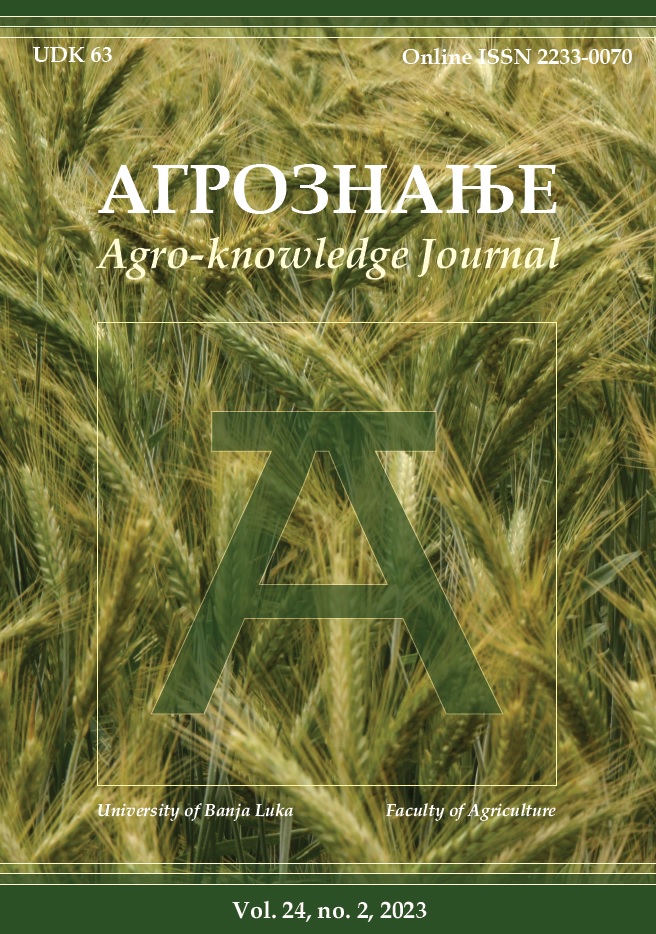The effect of different systems of growing tomatoes in a protected area on morphological properties and business results
DOI:
https://doi.org/10.7251/AGREN2304169CAbstract
We are witnessing negative consequences caused by the use of synthetic crop protection products and fertilizers in food production. Interest in the indoor farming of certain plant species has grown significantly. Organic and integrated farming imply the use of natural products, while limiting or completely eliminating the use of synthetic resources. The goal of the research is to study different farming systems in two types of tomatoes and their effect on the variability of certain tomato properties (the number of formed flower trusses, number of fruits per flower truss, and tomato yield). Furthermore, the gross margin of tomato production was calculated. Factor A comprised of different systems of agricultural production: integrated and organic. Factor B comprised two types of tomatoes (cherry and beef). The experiment was set up in a modern indoor space, in controlled microclimate conditions in randomized block design in four replications. The organic system of farming highly significantly affected the studied parameters. The reason for this was the use of a modern growing technology and the approach to the farming itself.

